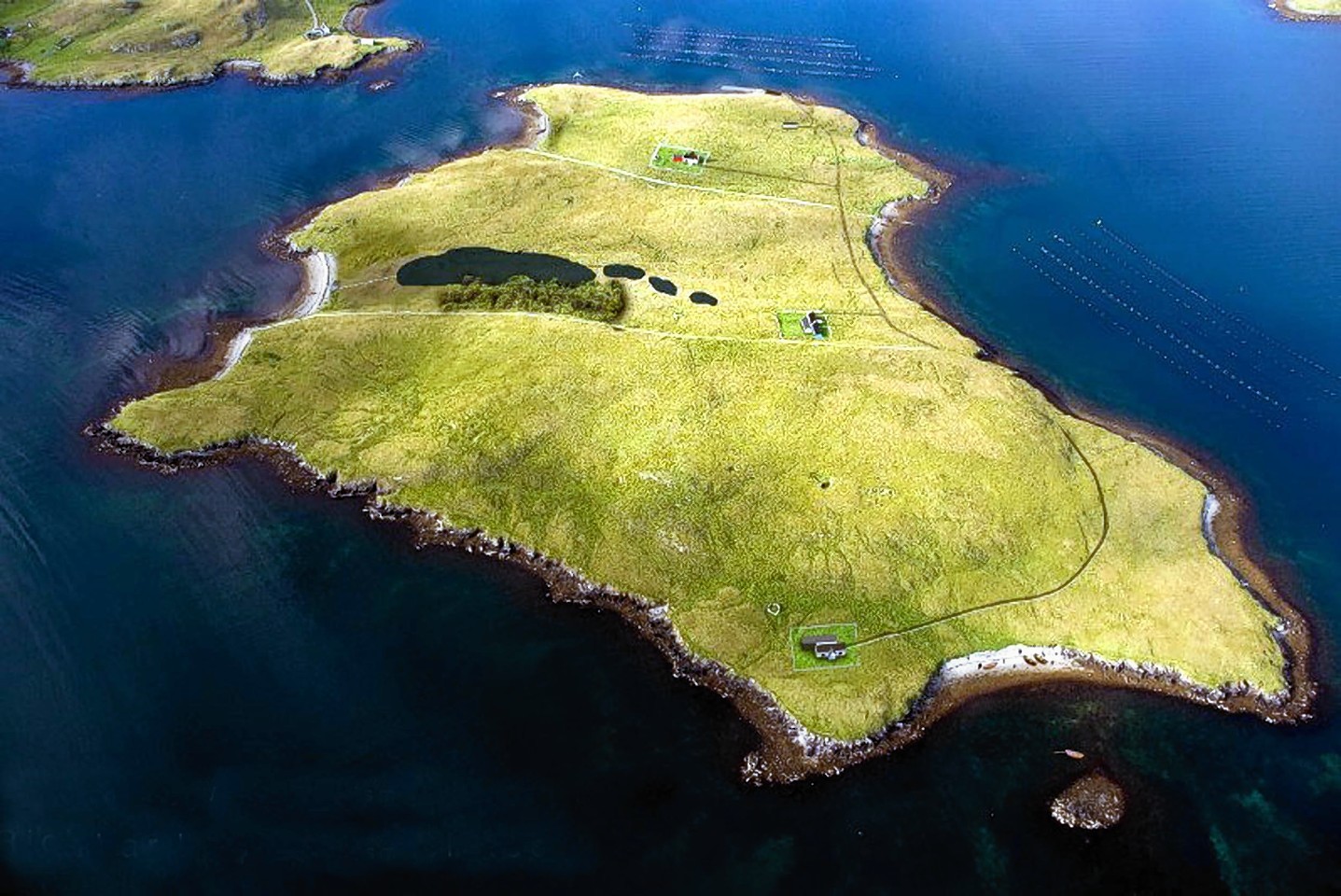A stunning island in the extreme north of Scotland could be inhabited for the first time in more than 80 years.
The £250,000 price tag for Linga in Shetland includes permission to create an eco tourism business on the island, which has been uninhabited since the last resident died in 1931.
The 64-acre island presently has no power, water supply or internet.
But whoever buys Linga can also to instal wind-generated power, build a pier and restore two derelict croft houses as holiday homes.
Uninhabited and frozen in time for decades, the last known person to have lived on the island is reported to have been Captain James Fraser.
The stunning island lies in the Vaila Sound with just a few hundred yards of sea separating it from the mainland village of Walls.
Sheltered from the Atlantic Ocean by the larger island of Vaila, the island is small enough to walk across in less than half an hour.
Evidence of prehistoric settlements prove continuous occupation and human activity on the island for several thousand years.
In 1881, it is recorded to have been home to 13 people split between two families but by 1901 only one of the houses was inhabited.
Bob Thomson is selling Linga in the hope that the new owner can finish off his ambitious project. The unusual business idea would give tourists the chance to experience life on a traditional Shetland croft at the end of the 19th century.
Mr Thomson, who grew up in Shetland and bought the island in 2008, said: “I was brought up in Walls and as a child used to play on the island in the school holidays with friends as we grew up in small boats.”
He said he would like someone “really dedicated” to complete his vision.
He continued: “It needs a younger person to take over and complete the concept.”
He added: “Owning an island in Shetland is the best feeling ever and it is very sad to have to consider selling especially as the development concept has received such fantastic local support.
“When talking to people abroad about owning the island they are always really impressed. My wife especially likes to tell people we meet overseas about Linga.”
Shetland estate agent Neil Risk said: “This is the first time we’ve sold an island.
“We have had quite a lot of interest and it’s only just gone on the market. We’re expecting there to be a lot more interest.”
